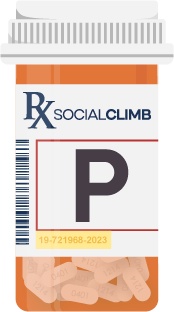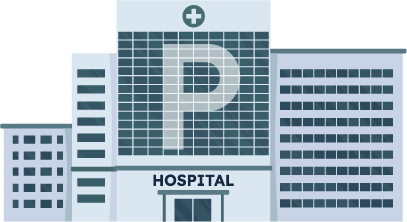When it comes to marketing concepts, the 5P’s of marketing are oldies but goodies. Let’s revisit the famous concept coined back in the 1950s in an exploration of how it still serves and informs contemporary business growth and, its application to marketing in healthcare. Shall we?
The 5 P’s of Marketing—Product, Place, Price, Promotion, and People—have been a cornerstone of business strategy since the mid-twentieth century. While we often debate the relevance of concepts initially designed for traditional commercial markets, the 5 P’s are equally applicable to the contemporary market and to the healthcare industry as well.
To elaborate a bit: the major shift in today’s marketing and business happens in personalization, automation, and customer centricity, while we still rely on the tried-and-true frameworks to grow with reference to the new trends and established best practices.
Now: back to the 5 P’s of marketing in healthcare.
Healthcare practices and hospitals are businesses, and in order to grow and prosper, they should be treated as such. Employing these strategies can enhance your operations and patient satisfaction. Let’s explore how the 5 P’s of marketing can be applied effectively to healthcare.
 P #1: Product
P #1: Product
In healthcare, your product is the service you provide. Differentiating your services from competitors is crucial to attracting and retaining patients at scale. This could involve focusing on patient-centered care, offering unique services, or incorporating innovative technologies.
For example, implementing online scheduling, easy-to-use patient portals, telemedicine options, or free health improvement programs, such as nutrition, exercise, or self-check tutorials, can set your practice apart.
Despite the seemingly monotonous nature of the healthcare industry, creativity in service delivery can significantly enhance patient experience and loyalty.
Product Differentiation Strategies in Healthcare
To apply the 5 P’s of marketing in healthcare, you need to explore and implement product, or in your case, service differentiation strategies.
For a strategy to work, it must be customized for your business: taking into account your current state, your goals, your budget, preferred timelines, and other criteria; but we’ll explore the frameworks within which you can build and apply these strategies.
Patient-Centered Care
We talk a lot about personalization: the key to patient-centered care is personalized care plans supported by attentive staff and empathetic communication.
Developing customized care plans that address the unique needs of each patient demonstrates commitment, reassures patients in stressful times, and improves health outcomes. Train your staff to provide attentive service and apply empathy in communication to enhance patient experience and make them feel valued and understood.
Convenience
Doctor appointments are hard enough without the burden of bureaucracy. To make it simpler for your patients, try streamlining the process in every step you can, allowing them to focus on their health and well-being.
If you don’t already (we’re not judging…yet), offer online scheduling, telemedicine, and user-friendly patient portals. Making it simple for patients to schedule appointments online or access care through telemedicine makes receiving care simpler and more accessible. User-friendly patient portals that allow patients to access their medical records and exam results, communicate with healthcare providers, and manage appointments streamline the patient journey.
Innovation
If you’re reluctant to invest in new technologies, let us give you the much-needed push: keeping up with the industry is crucial to your healthcare business’ survival, but being one step ahead of the competition will help you thrive. Invest in the latest medical technologies and treatments, and offer unique services to attract patients seeking contemporary treatments. Introducing unique healthcare services such as wellness programs, genetic testing, or holistic care options can also differentiate your practice and cater to diverse patient needs and preferences.
 P #2: Place
P #2: Place
‘Place’ in healthcare refers to the locations where patients can access your services, which includes physical offices and digital platforms. Ensuring your physical locations are accessible, welcoming, and strategically placed is important. Equally powerful is the digital access—having a user-friendly website, active patient portals, and reliable phone services. The easier it is for patients to access your services, the more likely they are to choose your practice.
Location Accessibility Strategies in Healthcare
Don’t worry, we won’t suggest you move. But we’ll explore how you can make your location(s) more visible and accessible to your patients through the journey of applying the 5 P’s of marketing in healthcare.
Physical Locations
Ensure your clinics are located in accessible areas with convenient parking and public transport options. Analyze how convenient and accessible your current location is for your target patient demographic: you can do this by simply asking patients if they had trouble finding you, whether they had traveled long, how was traffic… These insights will help you choose the next location more wisely.
Local SEO
As we approach the digital aspects of accessibility, let’s discuss one of the crucial aspects where your physical location intersects with digital access: online maps and directories. To be easily found online, not only to the patients who made appointments but to those exploring healthcare options, enlist the help of local SEO.
Create and optimize profiles on platforms such as Google Business Profile (GBP) and Apple Business Connect (ABC) so you’re easily featured in local ‘near me’ searches on both maps and search engines. To ensure a smooth user experience, make sure your pins are positioned correctly to bring patients right to your door (this is especially important if you have multiple entrances for different clinics or if your clinic is located in a building complex with multiple entries).
Digital Access
Today’s healthcare journey begins online: be it by googling symptoms, procedure experiences, or specialists, modern patients don’t leave anything to chance. To meet them where they are, develop an intuitive website, efficient patient portals, and responsive phone systems.
A well-designed website that is easy to navigate and provides essential information quickly builds trust and allows visitors to easily convert to patients. Efficient patient portals that offer functionalities like appointment scheduling, prescription refills, and direct communication with healthcare providers improve accessibility and convenience.
Community Outreach
Wherever you are, you can always get nearer to your target audience: establishing satellite clinics or mobile health units in underserved areas can help significantly expand your reach. Offering home visits for certain patient groups, such as the elderly or those with mobility issues, can further improve accessibility, foster patient loyalty and trust, and secure word-of-mouth recommendations both online and offline.
 P #3: Price
P #3: Price
Storytime: Last summer, I spent three afternoons trying to find out the price of the lower back MRI I scheduled at the hospital that accepts my insurance. The front desk unamiably said that they “could not disclose the prices”, so I proceeded to call the billing department, where they told me that they didn’t have that information (what?!) and that I should call my insurance company to obtain that information. The insurance company redirected me back to the hospital’s billing department, where I was then told that I’d need to check the price at the counter after (again, what?!) the procedure.
I ended up going to the scheduled appointment not knowing if I’d be able to afford it, so I went to the counter prior to the procedure where the kind worker finally gave me the pricing information. As you can imagine, I’d’ve gladly taken my business elsewhere were it not for the urgency of the situation, but the word I spread in my circle (and on their online review sites) about this healthcare establishment wasn’t favorable.
All this to say: yes, pricing in healthcare is complex due to the involvement of private health insurance, but this only means that healthcare providers should do everything in their power to make it easier to grasp.
Pricing Transparency Strategies in Healthcare
Providing as much price transparency as possible helps build trust with patients. This should include listing accepted insurance providers, outlining potential costs of services, building digital pricing simulators, and offering financial counseling. While it might be challenging to provide exact prices due to varying insurance coverages, clear communication about potential costs can help patients make informed decisions instead of adding to their pain.
Insurance Information
Create a clear and simple list of accepted insurance providers and feature it on your website and in your clinic. Providing a comprehensive list of accepted insurance plans helps patients understand their coverage options upfront. This information should be easily accessible on your website and through your administrative staff.
Cost Estimates
Provide estimates for common procedures and services. While exact costs can vary, offering price ranges for common procedures can help patients plan financially. Using tools that allow patients to get cost estimates, such as pricing calculators, based on their insurance coverage will help you enhance transparency.
Financial Counseling
Offer services to help patients understand their financial responsibilities. Providing access to financial counselors who can explain insurance benefits, payment plans, and potential out-of-pocket costs can alleviate patient anxiety related to healthcare costs. Offering flexible payment options or financial assistance programs can also support patients facing financial difficulties.
 P #4: Promotion
P #4: Promotion
The fourth of the P’s, Promotion, relates to marketing activities in healthcare and aims to create awareness and interest in your services, ultimately persuading patients to choose your practice over competitors.
This can be achieved through various marketing channels, including social media, email marketing, SEO, community events, and even collaborations with other healthcare providers. Highlighting patient testimonials, success stories, and the unique benefits of your services can effectively attract new patients.
Promotion Strategies in Healthcare
As a healthcare marketing platform, we’re dedicated to writing in depth about healthcare marketing strategies, tactics, and its practical application, and this passage can’t be long enough for us to voice everything we have to say on the matter. So, while we hope you’ll continue browsing, here we’ll simply highlight the most important concepts as concisely as we can.
Trackable Digital Marketing
Many providers refrain from comprehensive healthcare digital marketing strategies due to HIPAA constraints, but the progress of healthcare-specific marketing technology now supports these contemporary efforts with utmost compliance. Take to social media, optimize your website, rely on predictive targeting in healthcare to attract high-value patients for high-margin services, and track your efforts and monitor KPIs to refine the strategy and bring in a higher ROI.
Patient Surveys and Testimonials
Reputation management is one of the pillars of successful healthcare marketing. Ask your satisfied patients to share their experiences through testimonials or reviews on major online directories and manage these listings properly to ensure visibility and good word-of-mouth. Share success stories and positive reviews on your website and social media to build credibility and trust and provide social proof of the quality of your care.
The hidden jewel of this category is patient surveys: from NPS to PROs, surveys inform your decision-making and help you foster a patient-centric approach, while some of these statements can act as powerful testimonials with the consent of your patients.
Community Engagement
Participate in or sponsor local events and health fairs. Being present in the community through health fairs, local events, and sponsorships will increase your visibility and demonstrate your commitment to community well-being and health outcomes. Hosting seminars or free health screenings can also help you attract potential patients while collaborating with local businesses and influencers can amplify your reach and position you as a community-oriented brand.
 P #5: People
P #5: People
The ‘People’ element might be the most important of the 5 P’s: emphasizing the importance of building positive relationships between a healthcare entity and its stakeholders, including patients, staff, and the community.
Providing excellent customer service, conducting regular patient surveys, and responding to feedback can help ensure that you meet your patients’ needs. Engaging with patients through online reviews and maintaining a responsive, caring staff are essential components of this strategy. After all, in applying the 5 P’s in healthcare, we strive towards a patient-centric approach.
Patient Engagement Strategies in Healthcare
We might’ve already gone through some of these strategies, and it’s simply because each aspect of the 5 P’s approach centers around and is directed towards people. In saying so, it doesn’t hurt to review the most important pillars of patient engagement: customer service, patient feedback, and community building.
Customer Service
Train your staff to provide compassionate and efficient service. Investing in customer service training for all staff members can ensure that patients receive consistent, high-quality care and support. Fostering empathy and responsiveness will improve patient experience and satisfaction. After all, all we seek when found in a vulnerable position is some empathy and understanding, is it not?
Patient Feedback
Regularly collect and act on patient feedback through surveys and reviews. Yes, we already went through this, however, patient feedback has multiple roles in growing your business. In the promotional context, this feedback can help you build trustworthiness and attract new patients, while in the context of patient engagement, implementing regular patient satisfaction surveys and actively seeking feedback through online reviews can provide valuable insights into patient needs and areas for improvement. Taking visible actions based on feedback shows patients that their opinions are valued.
Community Relations
Build strong relationships with your community. Partnering with local organizations, schools, and businesses can improve your community presence and build trust. Participating in local health initiatives and providing useful healthcare resources can position you as a trusted health leader in your community.
Transforming Your Healthcare Business with Healthcare Marketing Technology
Applying the 5 P’s of Marketing to healthcare can transform the way practices and hospitals operate, leading to improved patient satisfaction, health outcomes, and business success. By focusing on Product, Place, Price, Promotion, and People, healthcare providers can create a more patient-centric, accessible, and transparent environment that stands out in a competitive market.
SocialClimb’s comprehensive healthcare marketing platform allows you to conduct holistic strategies that successfully apply the 5 P’s of marketing to healthcare in a streamlined, automated, measurable, and HIPAA-compliant way. From centralized reputation management to the only predictive targeting technology for healthcare on the market, this array of marketing tools allows you to make data-informed decisions and significantly increase your healthcare marketing ROI while fostering a patient-centric approach and growing your healthcare practice at scale.
Remember, healthcare is a business, and treating it as such doesn’t have to take away from the ethics of promoting well-being and saving lives: done right, growing your healthcare business can improve health outcomes, strip away the fear, and inspire your patients to take better care of themselves.











